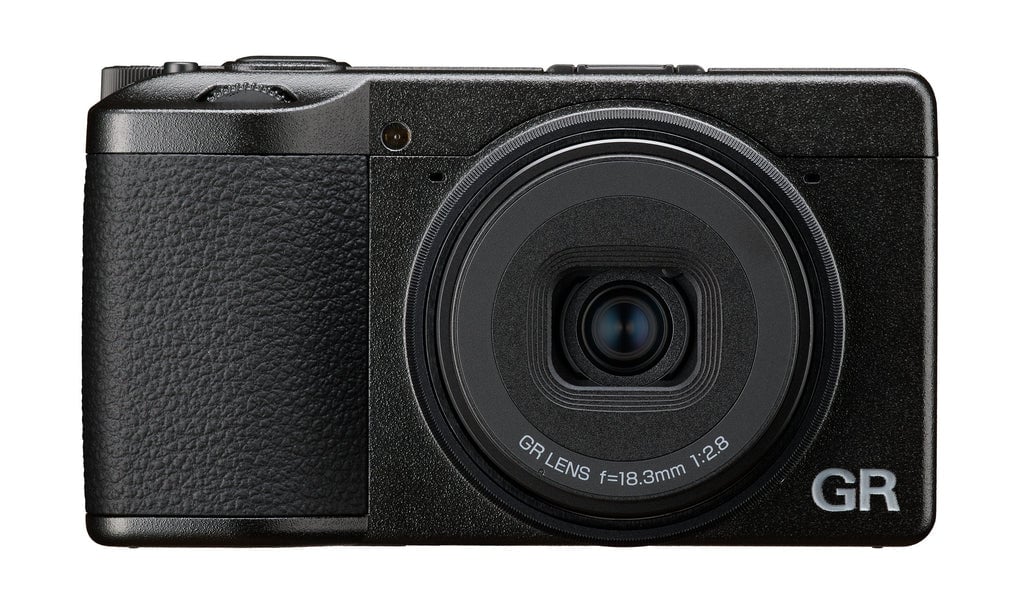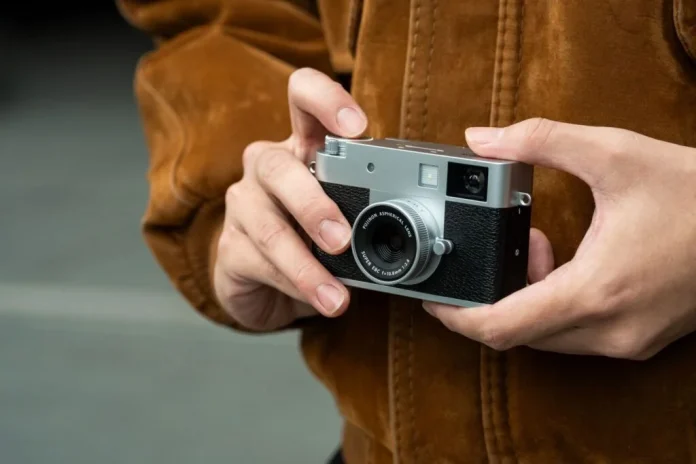I share a surprising obsession with many TikTok users: a craving for high-end, fixed-lens point-and-shoot cameras. This growing fascination has brought renewed attention to two major players—Fujifilm and Ricoh—who are capitalizing on the trend with models perfectly suited for today’s content-driven culture. Both brands are leaning into their retro appeal and delivering cameras that resonate with younger audiences looking to elevate their social media game.
Leading the charge is Fujifilm’s newly announced X Half camera, priced at $850. Despite its vintage design, this camera is purpose-built for modern creators, especially those posting vertical content on Instagram. The “half” in its name refers to its half-frame, portrait-oriented 18-megapixel sensor, which is tailored for vertically aligned shots. The lens offers a 32mm equivalent focal length with an f/2.8 aperture—ideal for lifestyle and street photography. Its compact size and simplified design make it a more portable sibling to Fujifilm’s popular X100V and X100VI models.
The X Half doesn’t just look old-school—it feels it too. The lightweight body includes a functional frame advance lever that adds to its nostalgic charm. On the back, a dedicated screen allows users to compose shots in a classic 3:2 aspect ratio and explore 13 different film simulations, a beloved feature of Fujifilm’s digital lineup. Altogether, it’s a camera designed not just for photography enthusiasts, but for a new generation of creators looking to blend analog aesthetics with digital convenience.

If it wasn’t already clear that the Fujifilm X Half is built for Instagram-focused users, consider this: it doesn’t support RAW shooting—a format most professionals rely on for detailed photo editing. Instead, it’s paired with a dedicated smartphone app for quick transfers and sharing, and it’s compatible with various Instax printers for instant prints. Fujifilm openly states that this camera is aimed at Gen Z users who want a digital camera to complement their smartphones, not replace them.
Adding to its nostalgic appeal, the X Half requires users to manually advance the frame lever after each shot, mimicking the tactile experience of shooting on film. This design choice makes it feel more like a high-end film camera emulator than a serious professional tool. But that’s also part of its charm—its limitations are intentional, evoking the slower, more deliberate process of analog photography.
To enhance the retro vibe, the camera also includes grain effect and time stamp features, allowing users to inject a vintage look straight into their final images. The Fujifilm X Half is expected to hit the market in late June, just in time for summer adventures and aesthetic content creation.
If you’re looking for something a bit more traditional, Ricoh is gearing up to finally unveil the long-awaited follow-up to its legendary fixed-lens camera, the Ricoh GR III. The company recently confirmed that the Ricoh GR IV is officially in development. It promises a redesigned lens, a new sensor, and an upgraded digital imaging engine. Ricoh also hinted at integration with a new smartphone app, which should streamline the process of transferring images directly to mobile devices. We’ll get our first look at the GR IV on May 31 during preview events at GR Spaces in Tokyo, Beijing, and Shanghai, though the full release won’t come until the fall.
While the Fujifilm X100VI initially enjoyed viral success—fueled by rave reviews and TikTok hype—interest has started to cool, likely due to its steep $1,600 price tag and persistent scarcity. In contrast, the Ricoh GR III remains a fan favorite, offering a more affordable and widely available alternative. Still priced under $1,000 used and around $1,100 new, the GR III continues to impress with its discreet design and sharp image quality. It features a 24.2-megapixel APS-C sensor and comes in two versions: the GR III with a 28mm lens, and the GR IIIX with a 40mm lens suited for street and portrait photography.
However, the future of these compact powerhouses may be uncertain. Ricoh announced that it will stop shipments of the GR III in July due to difficulties sourcing parts and components. While the GR IIIX will still be available for the time being, demand is likely to surge as availability tightens. For fans of minimalist, high-performance cameras, the wait for the GR IV—or the chance to snag one of the remaining GR IIIs—could feel agonizing.



 Viesearch - The Human-curated Search Engine
Blogarama - Blog Directory
Web Directory gma
Directory Master
http://tech.ellysdirectory.com
8e3055d3-6131-49a1-9717-82ccecc4bb7a
Viesearch - The Human-curated Search Engine
Blogarama - Blog Directory
Web Directory gma
Directory Master
http://tech.ellysdirectory.com
8e3055d3-6131-49a1-9717-82ccecc4bb7a